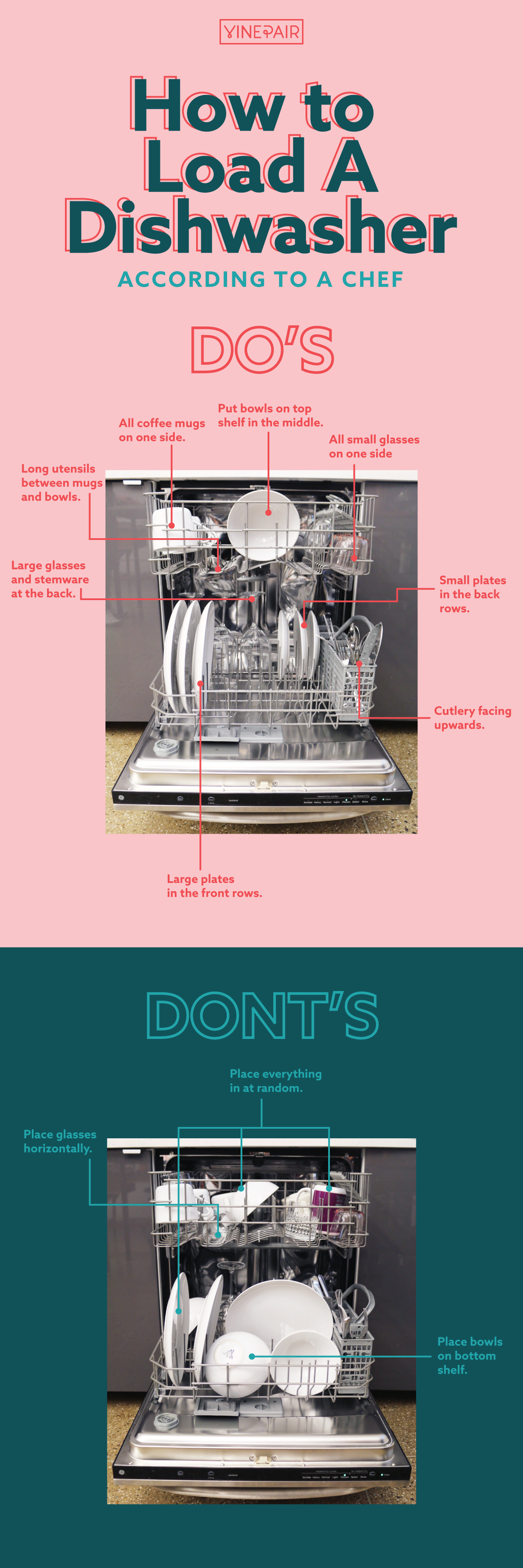Tim McKirdy is VinePair’s managing editor. Prior to writing about alcohol professionally, he studied at London’s Westminster Kingsway Culinary College and worked in multiple award-winning kitchens in the British capital and later Buenos Aires, Argentina. If you have any burning questions for VinePair’s resident chef, please reach out to [email protected].
While you won’t find appliances like household dishwashers in professional kitchens, the organizational skills developed when working on the line can inform proper dishwasher practices. That’s what I think, at least, but maybe I’m just a little OCD.
Either way, if you’ve gone to the expense of buying a dishwasher, you may as well reap all of its labor-saving benefits. Nothing unlocks that full potential better than careful organization when loading the machine.
This may seem like stating the obvious, yet the average dishwasher layout is slightly counterintuitive. Even when you think you’re loading properly, you may be going about things completely the wrong way.
A common error comes from taking the approach that all glassware belongs on the top shelf while all plates, bowls, and cutlery should be loaded into the lower section. It makes sense: The jets of water that scrub everything clean typically rise from the bottom, and you might rightly assume that the most heavily soiled items should therefore be closest to the water source. But follow this theory to a T and you’ll soon become stuck when trying to accommodate bowls — they just don’t fit naturally.
Instead, load your bowls on the top shelf and your wine glasses on the bottom.
Most dishwashers are designed with a dedicated upper section for bowls. Placing them here not only allows you to load more, it also frees up space down below for plates as well as large glasses and stemware, which can’t otherwise be stored vertically. (Don’t even think about washing them horizontally).
When placing the bowls in their compartment, load from front to back so that each bowl fits snugly, allowing just enough space for the water and machine to work its magic. As for the glasses, be sure to slot them in carefully and so that they will stand vertically (and upside down). While most stemware is dishwasher safe these days, this will offset the risk of any unfortunate breakages.
Finally, as a best practice overall, always load like next to like (plates, glasses, and beyond) to ensure you’re making use of all available space. For a more visual representation, check out this VinePair guide:

